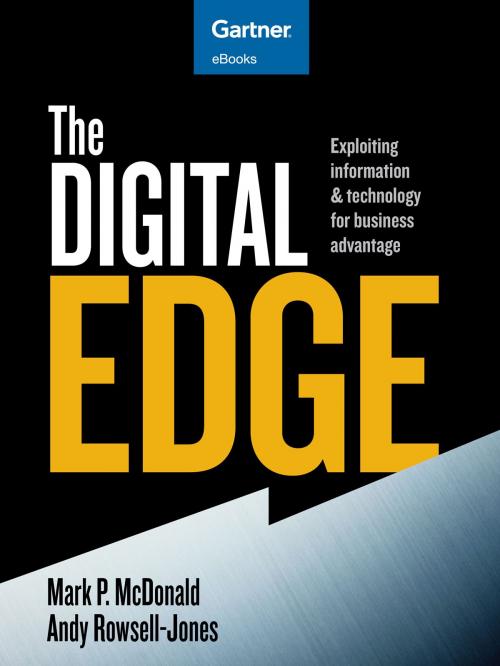The Digital Edge
Exploiting Information and Technology for Business Advantage
Business & Finance, Management & Leadership, Management, Marketing & Sales| Author: | Mark P. McDonald, Andy Rowsell-Jones | ISBN: | 9780988389717 |
| Publisher: | Gartner, Inc. | Publication: | October 21, 2012 |
| Imprint: | Gartner, Inc. | Language: | English |
| Author: | Mark P. McDonald, Andy Rowsell-Jones |
| ISBN: | 9780988389717 |
| Publisher: | Gartner, Inc. |
| Publication: | October 21, 2012 |
| Imprint: | Gartner, Inc. |
| Language: | English |
How can companies leverage technology for growth? By combining their digital and physical assets in new ways to create value, revenue and results. Digital technologies dominate more than half of business operations, but only a quarter of firms attribute revenue to these assets. Why? Because most organizations focus their strategies on digital transactions, which automate and substitute physical resources for digital ones. New, digitalized businesses have learned how to create value and revenue from digital assets. They go beyond further rounds of process automation to transform processes, business models and the customer experience by exploiting the pervasive digital connections between systems, people, places and things. Technologies such as smartphones, tablet computing, social media, big data, analytics, cloud computing, remote sensing and others provide the raw materials for any company today — large or small, old or new — to create a digital edge for its business. Learn how several leading organizations have used digital technology to solve fundamental contradictions for their customers or business models that made new opportunities possible in ways hard for competitors to copy. Their experiences are distilled into an approach any organization can follow: Identify digital value, select the right combination of digital and physical resources, and build digital capabilities by listening from the outside-in and developing from the inside-out. Then create leadership teams that will make your company ready to act on new digital opportunities to create sustainable competitive advantage. The Digital Edge addresses the connection between growth and digital technology. This is an issue facing every executive and McDonald and Rowsell-Jones provide a concise, actionable and practical approach to answer how technology supports growth. Jeff Sampler, Fellow of Strategy and Technology at Saïd Business School, University of Oxford
How can companies leverage technology for growth? By combining their digital and physical assets in new ways to create value, revenue and results. Digital technologies dominate more than half of business operations, but only a quarter of firms attribute revenue to these assets. Why? Because most organizations focus their strategies on digital transactions, which automate and substitute physical resources for digital ones. New, digitalized businesses have learned how to create value and revenue from digital assets. They go beyond further rounds of process automation to transform processes, business models and the customer experience by exploiting the pervasive digital connections between systems, people, places and things. Technologies such as smartphones, tablet computing, social media, big data, analytics, cloud computing, remote sensing and others provide the raw materials for any company today — large or small, old or new — to create a digital edge for its business. Learn how several leading organizations have used digital technology to solve fundamental contradictions for their customers or business models that made new opportunities possible in ways hard for competitors to copy. Their experiences are distilled into an approach any organization can follow: Identify digital value, select the right combination of digital and physical resources, and build digital capabilities by listening from the outside-in and developing from the inside-out. Then create leadership teams that will make your company ready to act on new digital opportunities to create sustainable competitive advantage. The Digital Edge addresses the connection between growth and digital technology. This is an issue facing every executive and McDonald and Rowsell-Jones provide a concise, actionable and practical approach to answer how technology supports growth. Jeff Sampler, Fellow of Strategy and Technology at Saïd Business School, University of Oxford















